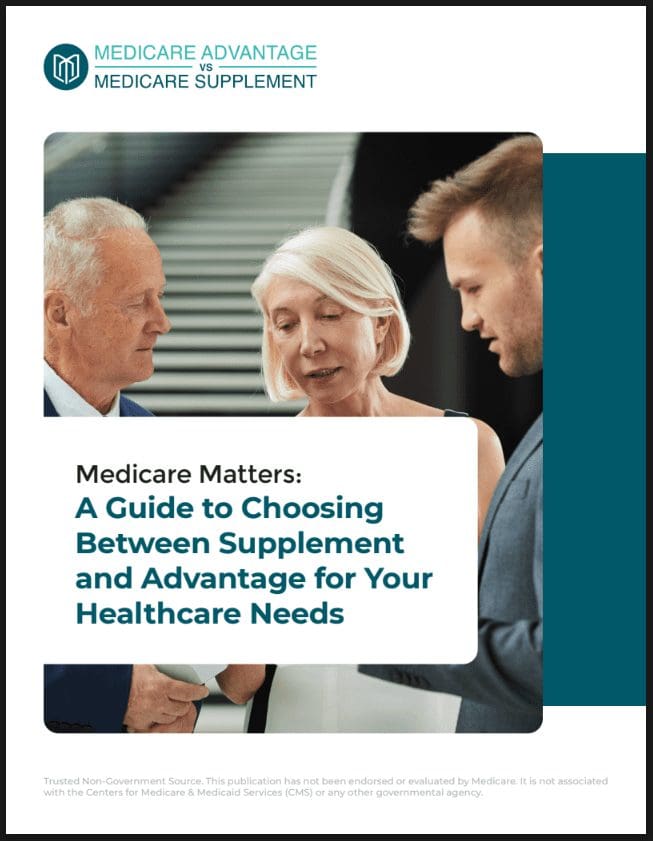Key Takeaways
-
Relying solely on Medicare Part A or Part B in 2025 leaves significant gaps in your healthcare coverage and could lead to high out-of-pocket costs.
-
Understanding what each part covers—and more importantly, what it doesn’t—is essential before deciding to skip additional Medicare options.
Understanding the Basics of Medicare Parts A and B
Medicare is made up of different parts, each serving a unique function. Part A and Part B are the foundational components, commonly referred to as Original Medicare.
What Medicare Part A Covers
Medicare Part A helps cover inpatient care. This includes:
-
Hospital stays
-
Skilled nursing facility care (short-term)
-
Some home health care
-
Hospice care
You generally don’t pay a premium for Part A if you or your spouse paid Medicare taxes for at least 40 quarters (10 years). However, Part A isn’t completely free. In 2025, you face an inpatient hospital deductible of $1,676 per benefit period. After 60 days, daily coinsurance kicks in.
What Medicare Part B Covers
Part B focuses on outpatient care. This includes:
-
Doctor visits
-
Preventive services
-
Durable medical equipment (DME)
-
Lab tests and imaging
You pay a monthly premium for Part B, which is $185 in 2025, plus an annual deductible of $257. After meeting the deductible, you typically pay 20% coinsurance for services.
The Gaps Left by Only Having Part A or Part B
Choosing to enroll in only Part A or only Part B creates serious gaps in your coverage. Each part is designed to work together with the other. Opting for just one will limit your ability to access essential care.
If You Only Have Part A
Without Part B, you lose access to most outpatient services. This includes:
-
Regular doctor visits
-
Preventive screenings
-
Outpatient surgeries
-
Mental health outpatient care
If you experience a health issue that requires outpatient care, you’d be responsible for the full cost. Even minor procedures or check-ups could become financially burdensome.
If You Only Have Part B
Skipping Part A means you won’t have inpatient hospital coverage. If you’re hospitalized for any reason, you’ll be responsible for the full cost of the stay, which can quickly climb into the tens of thousands.
Why Some People Only Enroll in One Part
There are a few reasons someone might opt for only one part of Medicare:
-
Still working and covered by an employer health plan
-
Veterans who rely on VA benefits
-
Tricare or other federal coverage overlaps with Medicare
-
Living abroad and not needing full U.S.-based coverage
While some of these scenarios may justify skipping a part temporarily, they require careful planning. Even in these cases, not enrolling correctly or on time can result in penalties and gaps in coverage later on.
The Cost of Skipping Additional Coverage
Original Medicare—Parts A and B—doesn’t cover everything. Choosing to stop at just one part can create major financial risks.
Out-of-Pocket Costs
Even if you have both Part A and Part B, you’re still exposed to:
-
No cap on out-of-pocket spending
-
20% coinsurance for most services
-
Full costs of prescription drugs
If you only have one part, these costs become even more severe. There’s no protection from medical expenses piling up if you face serious illness or require regular treatment.
No Prescription Drug Coverage
Neither Part A nor Part B covers most outpatient prescription drugs. If you skip everything else, including drug coverage, you will have to pay out of pocket for all medications unless you qualify for separate assistance.
In 2025, Medicare Part D includes a $2,000 out-of-pocket cap for covered drugs. But if you’re not enrolled in any drug plan, this protection doesn’t apply to you.
Late Enrollment Penalties That Stick Around
Failing to enroll in Medicare when you’re first eligible could lead to late enrollment penalties—some of which last for life.
-
Part B penalty: 10% increase in your premium for every 12-month period you could’ve had Part B but didn’t. This penalty is permanent.
-
Part D penalty: Calculated as 1% of the national base premium for every month you go without coverage after being eligible.
If you skip enrolling in Part B or a drug plan during your Initial Enrollment Period and don’t qualify for a Special Enrollment Period, you may have to wait until the next General Enrollment Period, which runs from January 1 to March 31 each year. Coverage starts July 1.
You’re Also Skipping Benefits Like These
Additional parts of Medicare—or supplemental options—can add value that Original Medicare alone doesn’t provide.
No Annual Out-of-Pocket Maximum
Original Medicare doesn’t place a cap on your annual out-of-pocket costs. If you need long-term treatment, you could pay thousands of dollars each year.
No Dental, Vision, or Hearing Coverage
Part A and Part B do not cover most routine dental care, eyeglasses, or hearing aids. Skipping supplemental coverage means you’ll pay for these services entirely out of pocket.
Limited Emergency Coverage Abroad
If you travel internationally, Medicare Parts A and B offer little to no coverage. You would need to explore additional coverage options for peace of mind while abroad.
What You Can Do Instead
If you’re only enrolled in one part—or just both Parts A and B—you still have options to fill in the gaps.
Consider Enrolling in a Drug Plan
To avoid future penalties and ensure coverage, look into a standalone prescription drug plan (Part D). You can enroll during your Initial Enrollment Period or during Medicare’s Annual Enrollment Period (October 15 to December 7).
Look Into Coverage That Limits Out-of-Pocket Spending
Options exist that can help you limit your annual costs and expand your benefits. Some choices include coverage that works alongside Original Medicare and provides:
-
An annual out-of-pocket maximum
-
Lower coinsurance rates
-
Additional benefits like dental or vision
Make sure to evaluate these options based on your specific health and financial needs.
Use Preventive Services
If you do have Part B, take full advantage of the preventive services it offers. Annual wellness visits, cancer screenings, and vaccinations are covered, and using them can help you catch issues early.
Don’t Forget Special Enrollment Periods
There are time-sensitive windows during which you can make changes or add coverage without facing penalties.
-
Initial Enrollment Period: A 7-month period around your 65th birthday
-
Special Enrollment Periods: Triggered by events like losing employer coverage
-
General Enrollment Period: January 1 to March 31 annually, with coverage starting July 1
-
Annual Enrollment Period: October 15 to December 7 for plan changes
Knowing these timelines can help you avoid gaps in coverage and financial penalties.
Skipping Coverage Isn’t a Long-Term Strategy
Choosing to rely on only Part A or Part B might seem like a short-term way to save money, but in the long run, it often leads to greater financial exposure. Unplanned health issues can arise, and the lack of coverage could make them significantly more costly.
Even if you’re healthy now, future medical needs are unpredictable. Having a more complete Medicare plan can help you be better prepared for what lies ahead.
Planning Ahead Helps You Avoid Surprises
Understanding the role of each Medicare part and what you risk by skipping them is essential. Take time to evaluate your current needs, future risks, and the enrollment periods available to you. This is especially important if you have delayed retirement or if your coverage has recently changed.
Review Your Medicare Choices Carefully
If you’re thinking of relying on just Medicare Part A or Part B and skipping everything else, it’s crucial to understand what that decision really means. From higher costs to uncovered services, the gaps can add up fast. Talking to a licensed agent listed on this website can help you understand your options and choose the right path for your situation.









